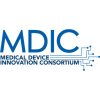Product Development failures can be defined in many different ways. They can be as simple as a delay, or as devastating as the need to schedule invention. Some off-course diversions can be corrected as easily as modifying requirements and documenting why, or as impossible to correct as an evergreen wish list from one PD participant who has the power to derail the process.
Every company is free to adapt their own product development process to assure a quality result. Most have their own category name for the stages. In DuPont Medical Products, we had Approval for Market Research, Approval for Technical Feasibility, Approval for Engineering, Approval for Manufacturing, and Approval for Commercialization. This fit an OEM that developed instruments and assays.
In the Product Development and Management Association, we refer to the stages as: Opportunity Identification and Selection; Concept Generation; Concept/Project Evaluation; Development of the Technical and Marketing Tasks; and Launch. This is more generic and could fit a Bank developing financial products just as it could fit a BioMed or Chemistry firm.
An outstanding presentation recently from Southco, a world leader in engineered access control, hardware, services and solutions, emphasized: Project Authorization; Planning and Feasibility; Design & Process Development; Tooling Development; Launch Preparation; and PPAP and Project Closure. While PPAP is an automotive-industry acronym that refers to Production Part Approval Process, you don’t need to be in automotive to use it.
Have an adaptable development process and adhere to the process, especially the stage gates, for verifications and approvals. The names can be different, but the principles are basically the same:
Even with such a refined process, keep in mind the following to avoid mistakes:
Integrate customers and users into the design process. Customers and users may be distinctly different groups, depending on the market. Get direct employees into the field with consultants, make discoveries, and ask open questions. Research is not just leading the interview to confirm a belief.
Identify opportunities for innovation/differentiation early, and not just in design. Assess, through Product Research, what the differences are between competing products. It allows for the discovery of those opportunities to make your product unique. We sell by difference, but we still need the same key attributes that would make your company’s product accepted. A me-too product without an advantage (that the competition can’t immediately claim) is destined to show modest results or none at all.
Engage outside expertise to complement your core competencies. Understand your limits. An opportunity to speed development is to add industrial designers early. They can visualize with the development team and imagine what a product might be configured like. Those images created, though preliminary, can usually improve the quality of information gathered.
Leverage early proof-of-concept through modeling, simulation, and prototyping. Stage 2 disasters can come when enthusiasm overshadows confirmation and testing. Scheduling invention is impossible. If a new product requires a breakthrough science or design, then you better delay development until technical feasibility is confirmed. Don’t let the momentum of a program loaded with staff keep you from putting on the brakes. Changes early are still cheaper compared to those in later stages.
Plan for regulatory compliance. In a recent Medical R&D Summit, there was increasing emphasis on poor ergonomics as the root cause of many device failures. The repeating themes were usability, use errors, and human factors. The conceptualization of devices is a process that can be driven by many different things. Some designs could be biased toward interface options, costs of parts and costs of labor, simpler DFM&A (design for manufacturing and assembly), brand-building beauty, shielding, PCB consolidation, alternative manufacturing methods, heat dissipation, fluid tight seals, contamination, and on and on.
Since people use most products, the bias toward user understanding should remain very high on the list of priorities to make a successful product, even if it adds cost. A small savings in manufacturing will never compare to the devastating losses from device miss-use. Failure mode effect analysis should not just confirm operation, but should confirm intuitive operation and the consequences of non-intuitive use.
Design for manufacture and assembly from the beginning. Although Stage 3 priorities are always to make the entire system work, it surprises me that so many medical products R&D programs aren’t forced to be more cost effective in the engineering development phase. I realize time to market is critical so the sacrifice is often made. Better conceptual iteration and greater side-by-side synergy with manufacturing engineers could yield better, more cost-effective prototypes sooner. While some businesses strive for this, others don’t. Smaller businesses with limited budgets leverage this strategy out of necessity. Continued usability testing at this stage reduces the risk of safety issues later on.
Qualify and engage manufacturing vendors early on. Preparation for production and for marketing launch requires a big infusion of capital. Prototypes that were made from machined parts (in Stage 3) are next designed for production tooling to leverage higher-volume processes. The validation at this stage must be done with prototypes that use the actual production parts or mimic them precisely, which is why selecting manufacturing methods earlier is better. The less that has to be changed, the lower the cost of development, and the greater the chance for success.
Design for Sustainability early. Occasionally, details like packaging, and the robustness required for transport is overlooked. Not only are the details often not in the requirements, they’re often not anticipated until the end. Small products see a lot more G-forces if they are dropped or thrown in shipping, and large products often fail to have features added to anchor it to a pallet or isolate it from shocks in transport.
Address marketing challenges. Hopefully the marketing team was intimate with the evolution of the product in earlier stages. This stage is no time to voice a concern about something decided months ago. Strategy and positioning are formalized in communications but should have been anticipated from stage one. Putting the educational tools in place should be intuitive and is why diverse teams are assembled in the beginning stages of the process. Everyone should be onboard and solidly executing.
Manage the Brand. Stage 5 launch should be well anticipated. The product should be known by everyone in-house and embraced through the earlier collaboration. The features and benefits should be clear and readily articulated by everyone. The metrics for launch performance, sales performance, and especially customer calls to the call center, etc. should all be closely monitored. In this stage the entire PDP should be evaluated for continuous improvement.
A company’s success or failure is hopefully measured by leaders who’ve participated in product development before and who understand the risks and benefits of delays or early introductions. Viewing product development from purely a calendar perspective will limit the real view of success. An engineer who emphasizes that he doesn’t know something important to demonstrate technical feasibility, even if it’s been done elsewhere, should be supported. A manager with the guts to delay a program when she feels more testing is needed (before the big investment) should be appreciated. The staffer who fights to put the button in the right place may have just saved the company.
Quality systems and stage-gate development programs have clearly provided safeguards for improved performance in our PD processes. The documentation of “lessons learned” offers safeguards to not repeat the same mistakes. But, there should still be high value placed on the knowledge and experience of the seasoned veterans who can guide and influence good decisions and anticipate things unique to your business. In the absence of those veterans, I believe that initiative, resourcefulness and insight are still the key attributes that reduce risk and keep most programs on track.







